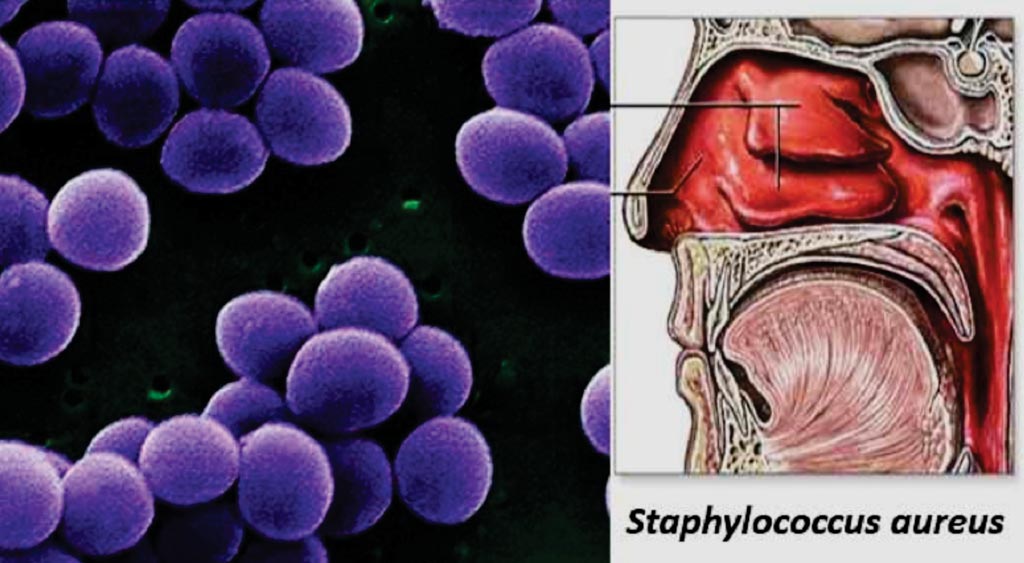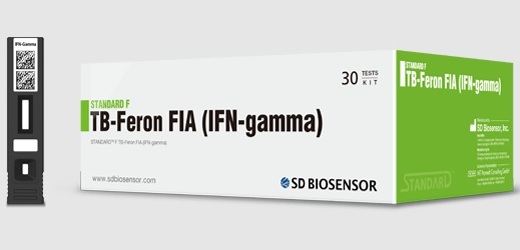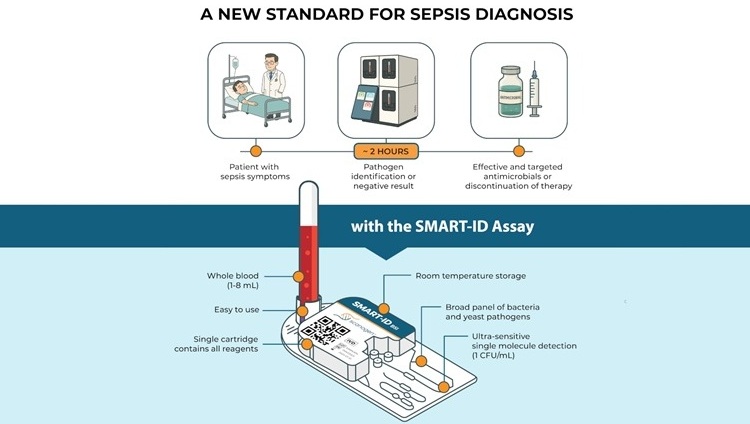Microbiological Features of Chronic Rhinosinusitis Compared
By LabMedica International staff writers
Posted on 13 May 2018
Different phenotypes of rhinitis and chronic rhinosinusitis (CRS) have been described based on symptom severity and duration, atopy status, level of control, comorbidities, and presence or absence of nasal polyps in CRS.Posted on 13 May 2018
Scientists have compared the microbiological features in middle meatus samples from chronic rhinosinusitis (CRS) patients with nasal polyps (CRSwNP) and those without nasal polyps (CRSsNP), and control subjects.

Image: The habitat and morphology of Staphylococcus aureus (Photo courtesy of Sagar Aryal).
Otolaryngology specialists at Beijing Tongren Hospital (Beijing, China) enrolled a total of 136 CRSwNP patients, 66 CRSsNP patients, and 49 control subjects who underwent endoscopic surgery between January 2014 and January 2016. Swab samples were obtained from the middle meatus during surgery and processed for the presence of aerobic and non-aerobic bacteria and fungi. Information on the allergic rhinitis, asthma, the percentage of eosinophils in peripheral blood, and the history of smoking and surgery was collected.
The scientists reported that the overall isolation rate for bacteria was 81.3% for the three groups, with the lowest in the CRSsNP group (77.3%) and the highest in the CRSwNP group (88.4%). The three most common bacterial species were: Coagulase-negative Staphylococcus (24.3%), Corynebacterium (19.9%), and Staphylococcus epidermidis (19.1%) in the CRSwNP group; S. epidermidis (21.2%), Corynebacterium (21.2%), Coagulase-negative staphylococcus (18.2%), and Staphylococcus aureus (13.6%) in the CRSsNP group; S. epidermidis (30.6%), Coagulase-negative Staphylococcus (28.6%), and S. aureus (14.3%) in the control group. For the bacterial species with high isolation rates, no significant difference in the microbial cultures was observed among the three groups; while in the CRSwNP group, a relatively high proportion of Citrobacter (5.9%, a bacterium with low isolation rate) was observed compared with the CRSsNP and control groups, which were negative.
The authors concluded that there were no significant differences in the microbiological features (except Citrobacter) in middle meatus samples from CRSwNP patients, CRSsNP patients, and control subjects. S. aureus may promote eosinophilic inflammatory response, while S. epidermidis may promote non-eosinophilic inflammatory response. The study was published on March 22, 2018, in the journal European Archives of Oto-Rhino-Laryngology.
Related Links:
Beijing Tongren Hospital




 assay.jpg)









